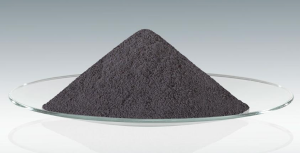Tantalum Powder Types & Properties

Tantalum Powder Types & Properties
Tantalum is a metal element with an atomic number of 73, a density of 16.68g/cm³, and a melting point of 2980°C. It is the third most refractory metal after tungsten and rhenium. Tantalum powder is powdered metal tantalum, which is dark gray or silver-gray, and is an important raw material for making tantalum capacitors and preparing tantalum metal. In this article, let's take a deeper look at the tantalum powder types and properties.

Tantalum Powder Types
Tantalum powder can generally be divided into two categories: capacitor-grade tantalum powder and metallurgical-grade tantalum powder.
1. Capacitor Grade Tantalum Powder
Capacitor-grade tantalum powder is generally divided into three series: low voltage series (working voltage is not greater than 25V), medium voltage series (working voltage is 32~40V), and high voltage series (working voltage is not less than 50V).
Capacitor-grade tantalum powder is used in the manufacture of the tantalum capacitor core. Its quality is mainly measured by its physical properties, chemical composition, and electrical properties.
A. Physical Properties
The physical properties mainly include indicators such as average particle size, particle shape, fluidity, and forming density.
Low voltage series products should have a small average particle size, complex particle shape, and low forming density, and high voltage series products should have a large average particle size, simple particle shape, and high forming density.
The fluidity of tantalum powder determines whether it can be formed by an automatic forming machine. Therefore, with the rapid increase in the output of small chip tantalum capacitors, great attention has been paid to the fluidity of tantalum powder.
B. Chemical Composition
The chemical composition has a direct effect on the electrical properties of tantalum powder. For example, high impurity content, especially high content of phosphorus, boron, oxygen, carbon, potassium, sodium, and iron will increase the leakage current of tantalum anodic oxide film and decrease the breakdown voltage, thus making the electrical properties of tantalum powder worse.
However, the content of certain elements in tantalum powder is not as low as possible. Studies have found that the incorporation of certain selected elements can improve certain electrical properties of tantalum powder.
Practices have proved that the incorporation of trace phosphide into tantalum powder can inhibit the shrinkage of tantalum block during sintering, thereby increasing the weight-specific capacitance of tantalum powder. Adding a small amount of aluminide with high dielectric strength to the tantalum powder can improve the breakdown voltage of the tantalum powder.
C. Electrical Properties
The electrical properties refer to the DC leakage current and the breakdown voltage of the tantalum anode surface oxide film, and the capacitance of the tantalum anode block, after the tantalum powder is weighed, compressed, vacuum sintered, and anodized. All these properties are determined not only by the intrinsic characteristics of the amorphous tantalum pentoxide anodic oxide film but also by the physical properties and chemical composition of the tantalum powder.
2. Metallurgical Grade Tantalum Powder
Metallurgical-grade tantalum powder is used to prepare various tantalum products or as alloy additives, so its quality is mainly measured by its physical properties and chemical composition.
The particle size as an important physical performance index is better to pass a 150 mesh standard sieve and the bulk density is preferably 3~6g/cm3. In order to avoid the loss of chemical components during vacuum sintering and melting, the oxygen content should be controlled at about 0.2%. Since tungsten, molybdenum, niobium, and other high melting point metals cannot be removed in the vacuum melting process, their content should be strictly controlled.
Conclusion
Thank you for reading our article, and we hope it can help you have a better understanding of the tantalum powder types and properties. If you want to know more about tantalum metal, we would like to recommend you to visit Advanced Refractory Metals (ARM) for more information.
Headquartered in Lake Forest, California, USA, ARM is a leading manufacturer & supplier of refractory metals throughout the world. It provides customers with high-quality refractory metals & alloys such as tungsten, molybdenum, tantalum, rhenium, titanium, and zirconium at a very competitive price.
{{item.content}}
LEVE A REPLY
{{item.children[0].content}}
{{item.content}}






